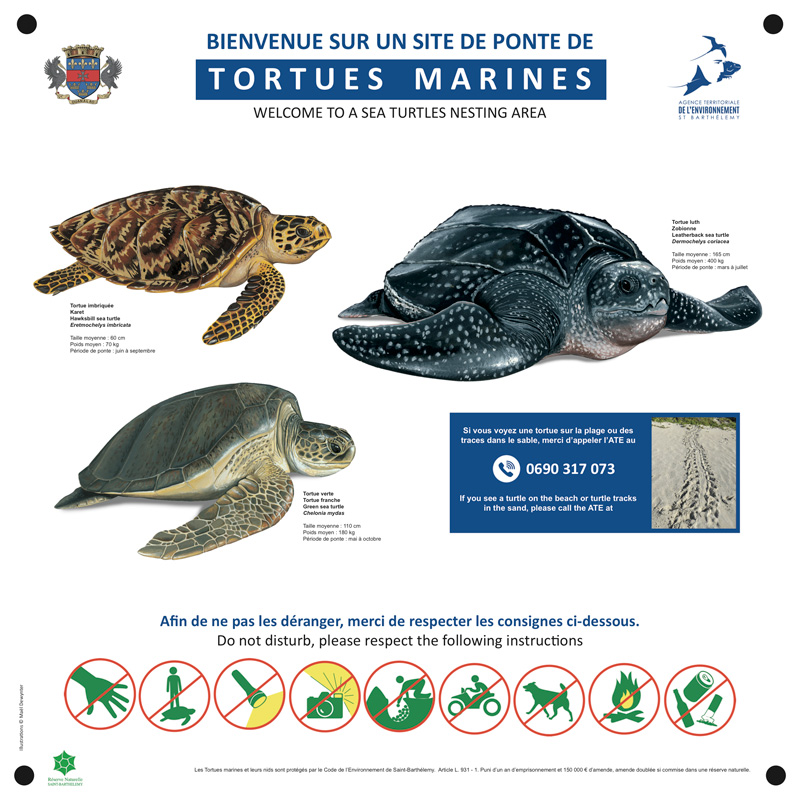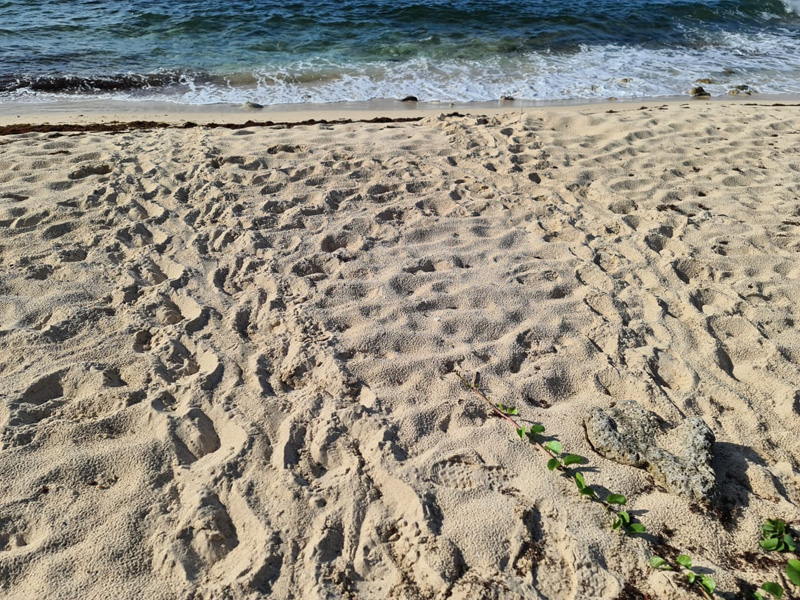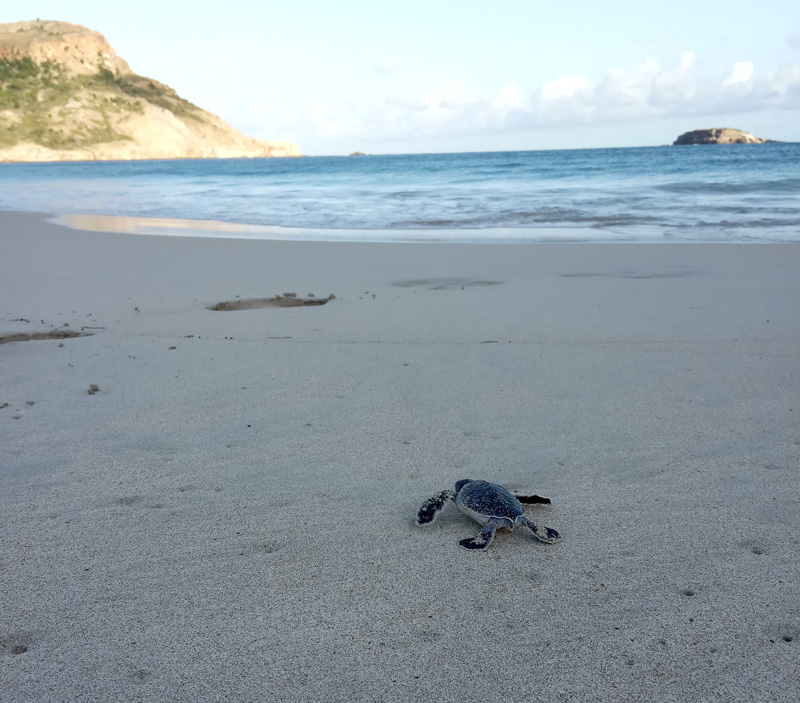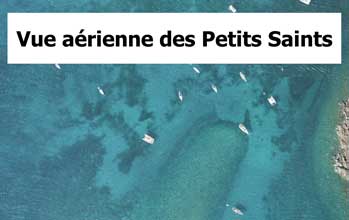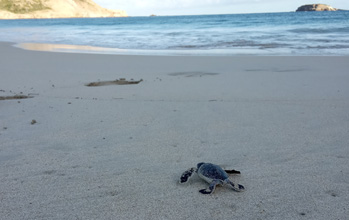In the world, there are seven recognized species of sea turtles, and five of them inhabit the waters of the French West Indies. These include the green turtle (Chelonia mydas), awksbill turtle (Eretmochelys imbricata), leatherback turtle (Dermochelys coriacea), loggerhead turtle (Caretta caretta), and Olive Ridley turtle (Lepidochelys olivacea).
Which sea turtle species are observable in St. Barths?
In our coastal marine ecosystems, two sea turtle species engage in feeding activities, offering year-round observation opportunities in St. Barths. The green turtle (Chelonia mydas) can be found frequenting the phanerogam meadows, while the hawksbill turtle specializes in feeding on the reefs.
Which sea turtle species choose to nest on the beaches of St. Barths?
Three sea turtle species choose the beaches of St. Barths as their nesting sites. The weightier green turtle (Chelonia mydas) and leatherback turtle (Dermochelys coriacea) show a preference for spacious sandy beaches, while the Hawksbill turtle (Eretmochelys imbricata) tends to favor shaded areas along the vegetation’s edge.
ABOUT
Green sea turtle (Chelonia mydas)
Average size: 43 inches | Average weight: 385 pounds | Laying period: from May to October
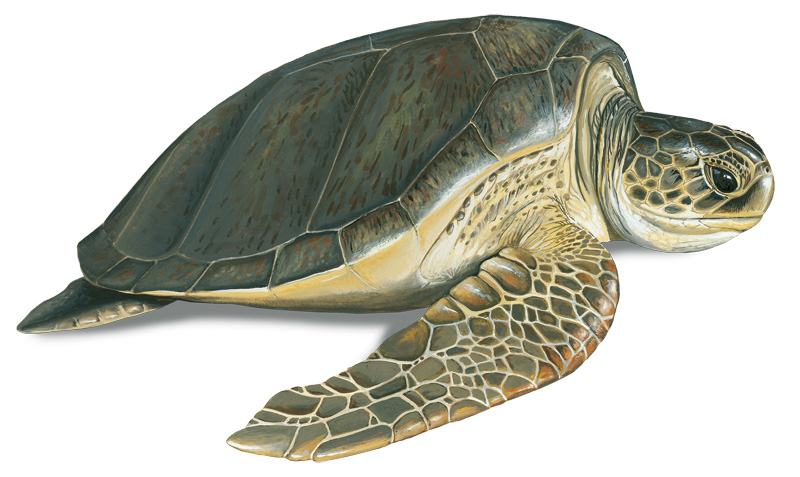
Hawksbill sea turtle (Eretmochelys imbricata)
Average size: 23 inches | Average weight: 155 pounds | Laying period: from June to September
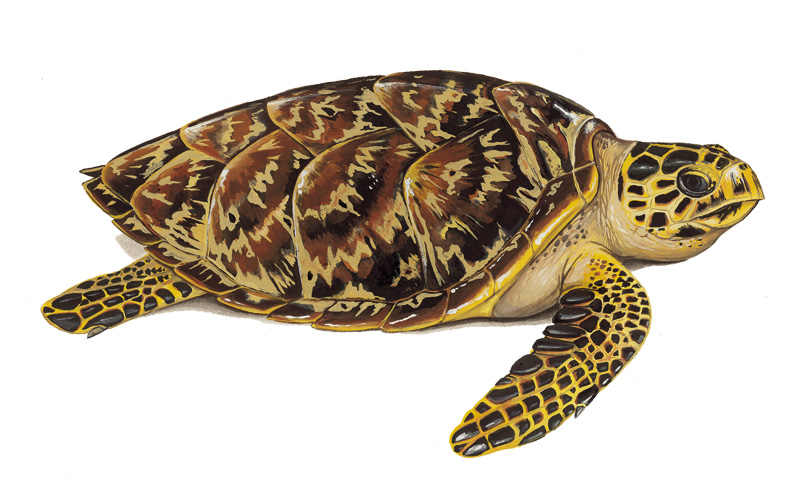
Leatherback sea turtle (Dermochelys coriacea)
Average size: 65 inches | Average weight: 880 pounds | Laying period: from March to July
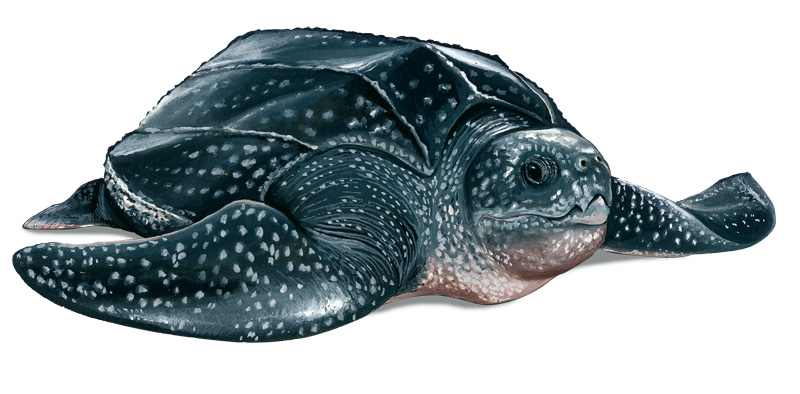
- How should I respond when I observe signs of egg laying on the beach?
When you come across nesting tracks on the beach, it’s crucial to take action. These tracks are typically visible in the early morning before visitors arrive. They vary based on turtle species, helping determine the species that laid the eggs. If you see these tracks, avoid erasing them and contact the ATE. An agent will identify the species, check for nesting, and, if needed, mark the nest. Incubation times vary among species, and tagging allows us to monitor nesting success. Once the hatchlings have left the nest at the end of incubation, the nest is dug. If you spot pets, ensure they are kept away from the area.
- What steps should I take if I come across turtle tracks on the beach?
You need to follow good practices to ensure a successful egg-laying process for turtles. Maintain a respectful distance, refrain from making noise or using light sources until the egg-laying begins. Contact the ATE, and they will dispatch an officer to safeguard the area and mark the nest after the turtle has returned to the sea. If there are any pets nearby, make sure to keep them away from the area.
- What are the recommended actions to take during an emergence?
The emergence marks the moment when young turtles leave their nest as a group and head towards the sea. To ensure their survival, it’s essential to adopt proper practices during this magical spectacle. Firstly, contact the ATE so that an agent can secure the site. While waiting for the agent’s arrival, refrain from touching the turtles, even if they appear to be in distress, and avoid placing them directly in the water. They need to make this journey on their own, developing their muscles and reaching the open sea. For certain species, this migration allows them to memorize the beach and return as adults to lay their own eggs. If the emergence occurs at night, turn off any light sources to prevent disorientation, and remain extremely vigilant to avoid crushing them. If there are any pets present, ensure they are kept away from the area.
- Did you know ?
The green turtles and hawksbill turtles that we observe year-round are not the same turtles that come to nest on our beaches. These turtles undergo migrations as adults, leaving their feeding grounds and traveling to their breeding areas. Among them, the hawksbill turtle is known for its remarkable loyalty, returning to the very beach where it was born to lay its own eggs.
